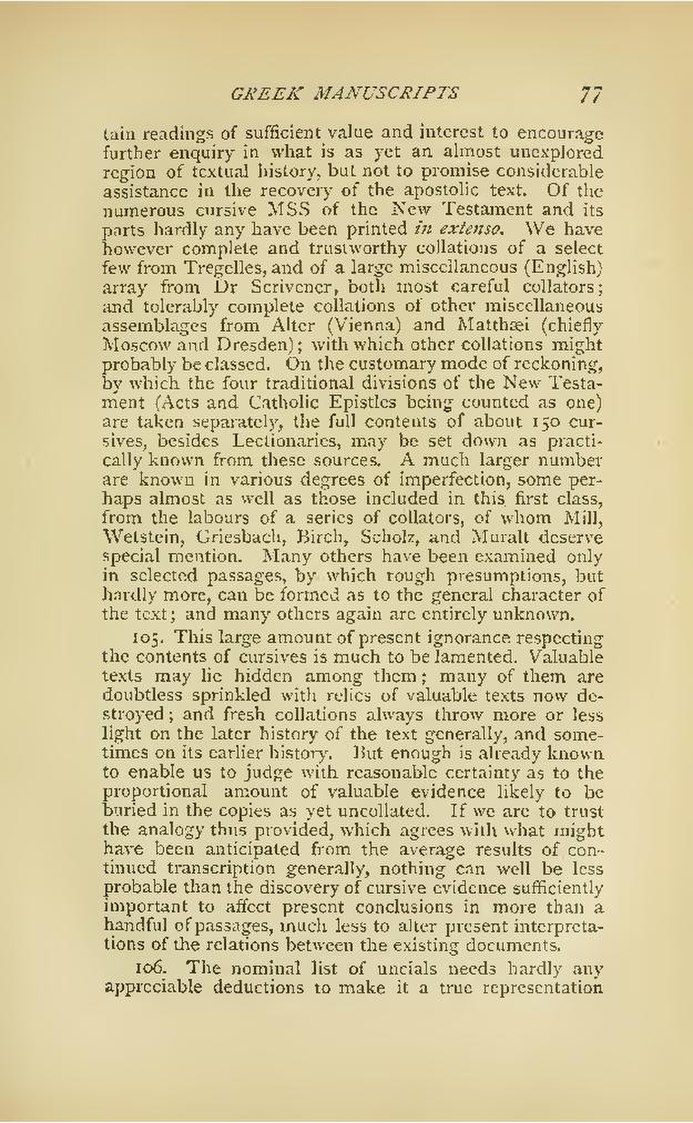tain readings of sufficient value and interest to encourage further enquiry in what is as yet an almost unexplored region of textual history, but not to promise considerable assistance in the recovery of the apostolic text. Of the numerous cursive MSS of the New Testament and its parts hardly any have been printed in extenso. We have however complete and trustworthy collations of a select few from Tregelles, and of a large miscellaneous (English) array from Dr Scrivener, both most careful collators; and tolerably complete collations of other miscellaneous assemblages from Alter (Vienna) and Matthæi (chiefly Moscow and Dresden); with which other collations might probably be classed. On the customary mode of reckoning, by which the four traditional divisions of the New Testament (Acts and Catholic Epistles being counted as one) are taken separately, the full contents of about 150 cursives, besides Lectionaries, may be set down as practically known from these sources. A much larger number are known in various degrees of imperfection, some perhaps almost as well as those included in this first class, from the labours of a series of collators, of whom Mill, Wetstein, Griesbach, Birch, Scholz, and Muralt deserve special mention. Many others have been examined only in selected passages, by which rough presumptions, but hardly more, can be formed as to the general character of the text; and many others again are entirely unknown.
105. This large amount of present ignorance respecting the contents of cursives is much to be lamented. Valuable texts may lie hidden among them; many of them are doubtless sprinkled with relics of valuable texts now destroyed; and fresh collations always throw more or less light on the later history of the text generally, and sometimes on its earlier history. But enough is already known to enable us to judge with reasonable certainty as to the proportional amount of valuable evidence likely to be buried in the copies as yet uncollated. If we are to trust the analogy thus provided, which agrees with what might have been anticipated from the average results of continued transcription generally, nothing can well be less probable than the discovery of cursive evidence sufficiently important to affect present conclusions in more than a handful of passages, much less to alter present interpretations of the relations between the existing documents.
106. The nominal list of uncials needs hardly any appreciable deductions to make it a true representation